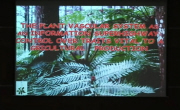Being a staple food for more than half of the population of the world and South Korea, rice is an important crop. For the past 20 years, global paddy rice cultivation area and production have shown an annual growth of 0.46% and 1.61%, respectively. Gl...
http://chineseinput.net/에서 pinyin(병음)방식으로 중국어를 변환할 수 있습니다.
변환된 중국어를 복사하여 사용하시면 됩니다.
- 中文 을 입력하시려면 zhongwen을 입력하시고 space를누르시면됩니다.
- 北京 을 입력하시려면 beijing을 입력하시고 space를 누르시면 됩니다.
https://www.riss.kr/link?id=A103701981
- 저자
- 발행기관
- 학술지명
- 권호사항
-
발행연도
2017
-
작성언어
English
-
주제어
consumption ; demand ; global rice ; Korean rice ; production ; trade
-
등재정보
KCI등재
-
자료형태
학술저널
- 발행기관 URL
-
수록면
157-165(9쪽)
- DOI식별코드
- 제공처
- 소장기관
-
0
상세조회 -
0
다운로드
부가정보
다국어 초록 (Multilingual Abstract)
Being a staple food for more than half of the population of the world and South Korea, rice is an important crop. For the past 20 years, global paddy rice cultivation area and production have shown an annual growth of 0.46% and 1.61%, respectively. Global rice consumption for food and processing has increased by 1.37% and 3.68%, respectively. Due to the main reason for such increasing human population, it is expected that from 439 million tons in 2010, additional 116 million tons will be needed in 2035. Global rice imports and exports have doubled in the last 20 years. However, in spite of such increment, global rice exports in 2013 were 8.4% of the total production. It is thought that rice protection policies in the producing countries are the main reason for such small scale of rice trading. In the past 5 years, India recorded the largest growth rate in rice exports (51.4%), whereas China showed the largest growth rate in imports (61.0%). For global utilization of milled rice during the same period, approximately 79.4% was used as food, 7.2% as animal feeds, and 1.4% for processing. Regionally, Asia has shown a similar pattern to the global rice usage, whereas utilization for processing in America, for food in Africa, and for animal feed in Europe was relatively higher than the global rice usage. Korea's cultivation area and production since the last 5 years, are 0.5% and 0.8% of those of the world, respectively. Its annual rice export is approximately 3,000 tons, which is 0.01% of the global rice export. Korea's rice utilization is high for food and low for feed and for processing relative to global rice utilization. Therefore, a review must be conducted to increase Korea's utilization of rice for processing and for feed production.
동일학술지(권/호) 다른 논문
-
- The Korean Society of Crop Science
- Kwon, Soo Jeong
- 2017
- KCI등재
-
남부평야지에서 적미 품종의 이앙시기에 따른 폴리페놀 함량 및 수량변이
- 한국작물학회
- 배현경
- 2017
- KCI등재
-
논 재배 팥 품종별 수량구성요소 및 에탄올 추출물의 항산화 성분 비교
- 한국작물학회
- 전현정
- 2017
- KCI등재
-
제분방법에 따른 품종별 쌀가루의 이화학적 특성 및 소화율
- 한국작물학회
- 박지영
- 2017
- KCI등재
분석정보
연관 공개강의(KOCW)
-

Fair Trade: Football Manufacture
Teachers TV Teachers TV -

Fair Trade: Fair Play Football
Teachers TV Teachers TV -

Fair Trade
Teachers TV Teachers TV -

KS3 Britain's Black History: Coffee Houses and the Slave Trade
Teachers TV Teachers TV -

The plant vascular system as an information superhighway control over traits vital to agricultural production
경상국립대학교 루카스 윌리엄





 ScienceON
ScienceON


